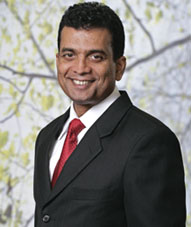|
observer |
|
|
|
|
|
OTHER LINKS |

|

|

|
Is Lanka geared for a mobile revolution?
There are various trends that will change the way we use our mobile devices. While mobile email and enterprise voice convergence are just two of the trends leading the way for business mobility, expansions in the WCDMA offering, rich multimedia applications and inroads in Internet Protocol Multi Media Systems (IMS) and SIP technology will also mean new opportunities - not only for device manufacturers like Nokia, but also operators as they seize the services that are driving these trends. Acceptance by operators, enterprises and consumers also helps to pave the way for the take-up of new high-performance devices, access to mobilised applications, and technology convergence. En route to 3G - With more than 100 operators offering 3G services in the world today, consumers around the globe are now realising the many benefits that 3G offers, ranging from faster browsing to video streaming, e mail and music downloads and multiplayer games. A US based researcher, In -Stat said it expected the worldwide 3G subscriber base to grow from 29.1 million in 2004 to 540 million in 2010.Networks will be mostly IP (Internet Protocol) based with increased investments made on 'multi services platforms' where the underlying telecom infrastructure would be used to deliver 'convergent services' such as IP, TV, Video on Demand (VOD) and seamless integration across mobile and fixed devices. IP-based infrastructure will reduce maintenance costs, while increasing the quality of service and revenue generation options for providers. With businesses seeing the value of mobile e mails, that too will develop as businesses and institutions of all sizes gear up to improve their performance through mobility. Experience shows that operators can build successful businesses with advanced enterprise voice services. A clear trend is the growth of prepaid subscribers and convergent networks, which pose new challenges when operators charge for services. Nokia is introducing solutions to address both these developments. IDEA Cellular in India became the country's first and only operator to charge differently for data services, thereby increasing its revenue streams.IDEA Cellular uses Nokia's Intelligent Content Delivery System (ICD) solution on all IDEA's mobile networks across India. The Nokia ICD solution enhances IDEA's mobile packet core network capabilities and enables it to connect both prepaid and post-paid subscribers to data services and charge them according to the value of traffic and content. Data services usage is on the rise and it was important to not only extend data services to prepaid customers but also charge customers differently depending on the importance of the service for them. Nokia's technology combined with strong systems integration capabilities made Nokia the natural choice to enhance the machinery to support the increased data services offering. So local consumers can expect further value additions, not to mention price cutting, from the industry. "Local operators must note these trends and move to take advantage". "With these [CSAM2] trends and including high data speeds, IP voice, new services, consumers will benefit greatly. These trends help them reduce costs, increase network efficiency, deliver multiple services, increase revenue and the more savvy operators are already moving in this direction". The pace of 3G commercialisation globally is fuelled by WCDMA. As WCDMA gains a stronger foothold in markets around the world, Nokia continues to expand its portfolio of WCDMA devices that are enabled for enterprise and multimedia, and also for the mass market - enlarging the GSM/EDGE/WCDMA multi-radio device range and also accelerating the evolution of High Speed Packet Access (HSPA). Email to: [email protected] . |








